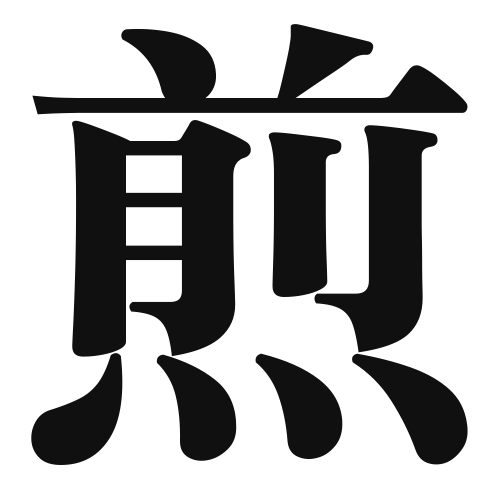1. Overview of Meaning
The kanji “煎” (sen) primarily means “to simmer” or “to roast.” It is often used in the context of cooking, particularly when referring to the process of gently heating food to enhance its flavor.
2. Formation and Radical
Formation of the Kanji: The kanji “煎” is a compound character (会意文字) that combines the radical for fire (火) with the character for “to grind” (先). This combination reflects the cooking process that involves heat and preparation.
Radical: The radical of “煎” is 火 (hi), which means “fire.” This radical is commonly found in kanji related to cooking and heat.
3. Examples of Usage
Common Words and Phrases: Some frequently used words that include “煎” are:
- 煎茶 (sencha) – a type of Japanese green tea
- 煎餅 (senbei) – rice crackers
Example Sentences in Daily Conversation:
- 「このお茶は煎れてから飲むと、もっと美味しいです。」(This tea tastes better when brewed.)
- 「煎餅を食べながら、テレビを見ます。」(I watch TV while eating rice crackers.)
4. Synonyms and Antonyms
Similar Kanji: A similar kanji is “焼” (yaki), which means “to grill” or “to bake.” While both involve cooking with heat, “煎” typically refers to simmering or roasting, whereas “焼” implies a more intense cooking method.
Antonyms: An antonym for “煎” could be “冷” (rei), which means “cold.” This represents the absence of heat, contrasting with the cooking process implied by “煎.”
5. Cultural and Historical Background
Relation to Japanese Culture: The kanji “煎” is significant in Japanese culinary practices, especially in the preparation of traditional teas and snacks. The art of brewing tea, particularly sencha, is a cherished cultural practice in Japan.
Proverbs and Idioms: One common saying is “煎じ詰める” (senjitsumeru), which means “to boil down” or “to summarize.” This reflects the idea of distilling information to its essence, much like the cooking process of simmering ingredients to concentrate flavors.
